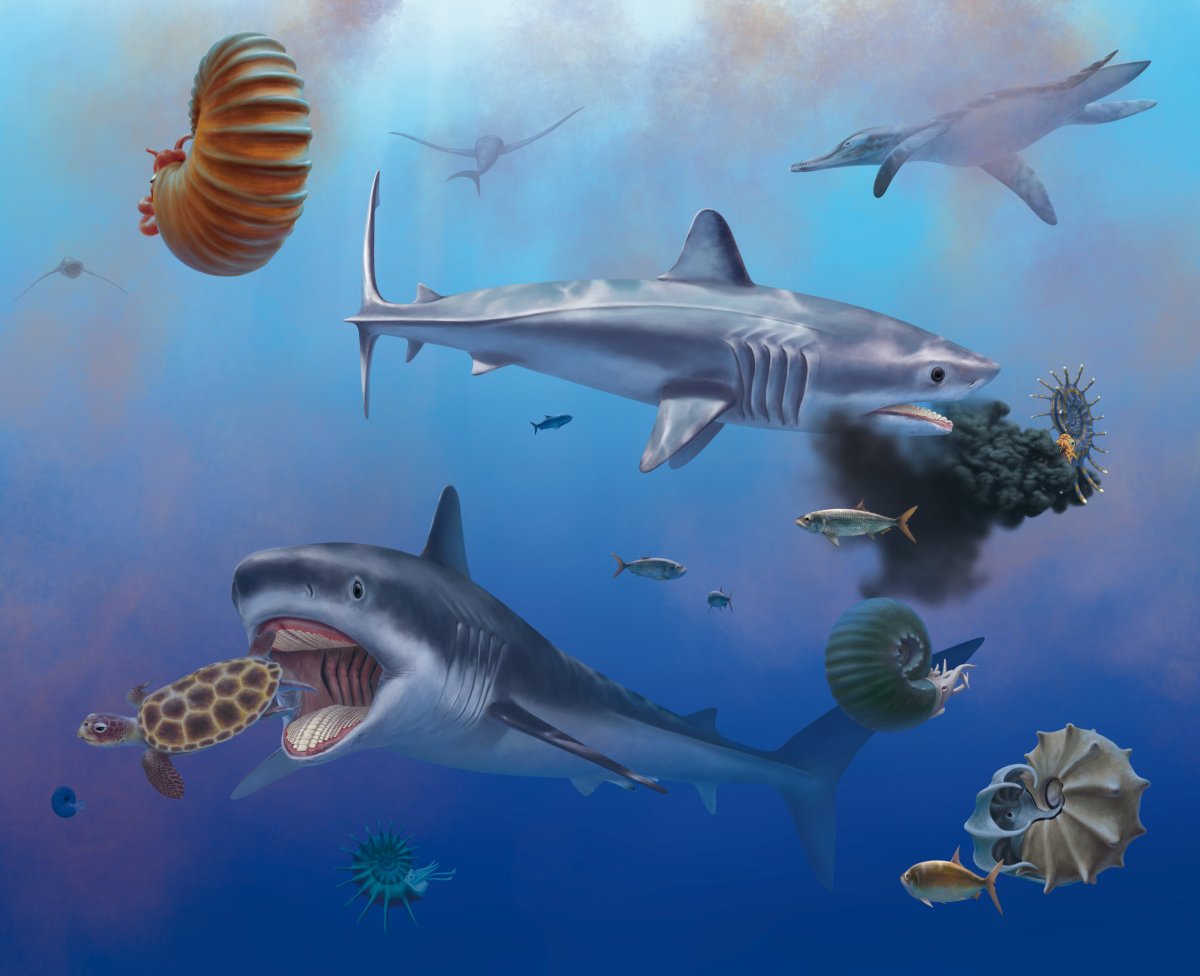The fossil of a huge great white shark relative that lived among the dinosaurs has been discovered in Mexico.
The discovery was made in a limestone quarry to the country's northeast by an international team of archeologists and paleontologists. Their find is detailed in a Proceedings of the Royal Society B: Biological Sciences study.
The bones of the creature, which lived during the Cretaceous period, were extremely well preserved, making this a rare find.
Paleontologists believe the creature had the potential to reach up to 30 feet long. In the study, they describe the animal as "gigantic." This makes it far bigger than the modern great white sharks. It belongs to the durophagous lamniforms (mackerel shark) family and is possibly the largest of this type of shark ever to have lived.
The creature was of the genus Ptychodus, an extinct genus of durophagous sharks known for having particularly large teeth that had a vicious bite.
"Fossils of Ptychodus are not so rare in Cretaceous marine deposits around the world. However, these mostly consist of isolated teeth, fragmentary dentition, and isolated vertebrae," lead author Romain Vullo, a researcher at Géosciences Rennes told Newsweek. "Complete specimens of Ptychodus were unknown until the discovery of the Mexican material. Such fossils are rare because their exquisite preservation requires exceptional conditions, such as a quiet muddy environment devoid of scavengers. The platy limestone of Vallecillo is one of the very few deposits of Late Cretaceous age that have yielded complete shark specimens."

The nearly intact fossil allowed scientists to get a good picture of the extinct species, and what it may have looked like, as well as what it may have eaten and how it moved. Some bones were so well-preserved that eye sockets, fins, tails and even the impression of organs were visible, a summary of the findings reported.
"Specimens mostly consist of isolated teeth or more or less complete dentitions, whereas cranial and post-cranial skeletal elements are very rare," the authors wrote in the study.
Scientists believe this shark, which would have hunted hard-shelled prey such as sea turtles, went extinct about 76 million years ago. They believe that its choice of prey may have been a big factor in the extinction as other animals had evolved that hunted the same animals, presenting competition.
"Our [...] analyses indicate that ptychodontids were high-speed durophagous lamniforms [mackerel sharks], which occupied a specialized predatory niche previously unknown in fossil," the authors explained in the study.
"The newly discovered fossils provide crucial information regarding the body shape of Ptychodus, its paleoecology, and its position within the cartilaginous fish tree of life," Vullo said. "We now know that Ptychodus was a member of the order Lamniformes (mackerel sharks) and occupied a unique ecological niche in Late Cretaceous seas, being the only pelagic shark with a durophagous diet. This suggests that ptychodontids were one of the main predators of ammonites and sea turtles in open marine paleoecosystems."
Looking at the shape of its streamlined body, scientists determined that the shark must have been able to swim exceptionally fast.
Despite these recent findings, there is still much to learn about this extinct species.
"Isotope analyses of Ptychodus teeth would be interesting in order to confirm that this shark was an apex predator, with a trophic level higher than previously thought, " Vullo said. "More generally, there are several other Cretaceous shark specimens that have yet to be described, and which will complete our knowledge on the diversity and ecology of this animal before the end of the Mesozoic Era."
Do you have a tip on a science story that Newsweek should be covering? Do you have a question about sharks? Let us know via science@newsweek.com.
Update 04/25/24, 10:13 a.m. ET: This article was updated to include a locator map.
Update 04/25/24, 11:07 a.m. ET: This article was updated to include direct quotes.
Uncommon Knowledge
Newsweek is committed to challenging conventional wisdom and finding connections in the search for common ground.
Newsweek is committed to challenging conventional wisdom and finding connections in the search for common ground.
About the writer
Robyn White is a Newsweek Nature Reporter based in London, UK. Her focus is reporting on wildlife, science and the ... Read more
To read how Newsweek uses AI as a newsroom tool, Click here.








